
Get To Know Your Fruits And Veggies From C To D
Table of Contents
Ca
ntaloupe Offers More Than Sweet Juicy Refreshment
................................................................................... . . . . .3
Cha
rd Packs A Nutritious Punch In A Colorful Package
........................................................................ . . . . . . . . . . . . . . . . .6
Che
rries Brighten The Table And Gladden The Heart
.................................................................................... . . . . . . . . .9
Coc
onut Cracks The Code For A Tasty Tropical Fruit
................................................................................... . . . . . . . .1 1
Col
lard Greens Are The Quintessential Southern Cuisine
............................................................................... . . . . . .14
Corn O
ffers More Than A Summer Vegetable Staple
................................................................................. . . . . . . . . . . .16
Cra
nberries Corner The Market On Creative Nutrition
............................................................................ . . . . . . . . . . . . .18
Cuc
umbers Are The Coolest In So Many Ways
.................................................................................................... .22
D
amson Plums Are A Delightful Discovery
......................................................................................... . . . . . . . . . . . . . . . . .24
D
urian Fruit Demands Attention On Many Levels
......................................................................................... . . . . . . .27
©Copyright 2014 ♦ TheFoodChopper.com ♦ All Rights Reserved | Page 2 of 26
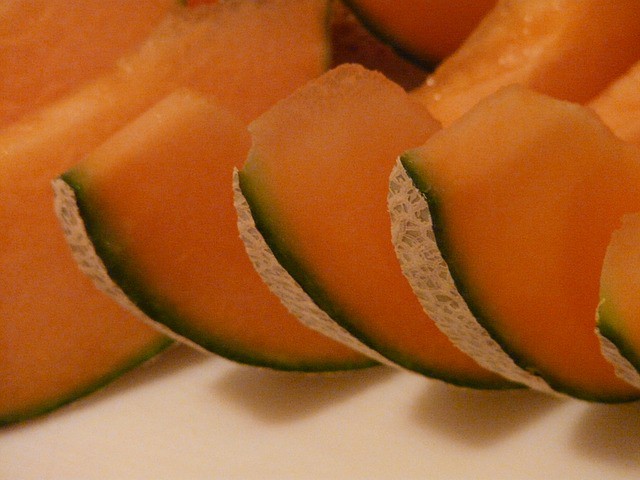
Get To Know Your Fruits And Veggies From C To D
Cantaloupe Offers More Than Sweet Juicy Refreshment
Some say cantaloupe and some say muskmelon. Whatever you call this pungent, juicy fruit, the fact is this is
one healthy food! Cantaloupe is the perfect snack for adults and kids, and adding this fruit to your diet has
definite benefits, besides just being tasty.
What is it?
Cantaloupe is part of the melon family which includes squash, cucumber, gourds, and pumpkin. In America, we
know cantaloupe by its rib-textured outer skin. When you slice a cantaloupe in half, you'll find a pocket of seeds and soft threads. Scoop this out and you'll be ready to enjoy the sweet, juicy orange color flesh with its
distinctive flavor and aroma.
Grown on vines, this fruit is ripe when the stem begins to separate easily from the cantaloupe itself. Because
the aroma of the cantaloupe is so distinctive, many people say it is quite simple to tell if the fruit is ripe. If it smells ripe, it is ripe.
©Copyright 2014 ♦ TheFoodChopper.com ♦ All Rights Reserved | Page 3 of 26
Get To Know Your Fruits And Veggies From C To D
History
Christopher Columbus is credited with introducing cantaloupes to America during his second voyage to the
continent in the late 15th Century. This North American cantaloupe with its familiar orange flesh is the variety we are most familiar with in America. This differs from the European cantaloupe, which has an outer rind of a
gray-green color and is smooth instead of ribbed.
Long before North America was introduced to cantaloupe, Africans, Egyptians, Romans, and Greeks grew the
fruit in their native lands. The varieties differed just as much as the regions, but it was all cantaloupe.
Health Benefits
Like many healthy fruits, cantaloupes are rich in vitamin C and contain antioxidants that help promote good
cardiovascular health and better immunity. Cantaloupe also contains beta-carotene, a rich source of vitamin A
which reduces the risk of cataracts and promotes eye health.
These vitamins also help limit the damage caused by free-radicals. We can't forget about the cantaloupe's
healthy dose of B-complex vitamins which are known to help regulate blood sugar levels by processing carbs
slowly, over a longer period of time.
Fun Facts
The name “cantaloupe” is derived from an Italian village called Cantalup, which was among the first places
where the fruit was cultivated around the year 1700. However, this is known by a few other names in different
parts of the world.
Persians and Armenians know this fruit as part of a group of muskmelons that include honeydew, casaba, and
crenshaw varieties. South Africans refer to them as spanspeks. Australians call cantaloupe rockmelons.
How to Eat
Most people enjoy fresh cantaloupe raw, on its own, savoring the juicy, rich texture and flavor as a snack or
dessert. However, because cantaloupe is so flavorful and appealing, many find it a fun food to experiment with
in order to serve in new ways. One interesting serving suggestion is to wrap cantaloupe chunks in thinly cut
prosciutto slices for a tasty and eye-pleasing appetizer.
Cantaloupe also goes well with yogurt and mixed with other fruits in sweet salads. You can even make a cold
soup by blending other fruits like apples, peaches, and strawberries with cantaloupe together in a cold puree.
Cantaloupe also makes a great sweet bread with just the right spices, nuts, and spices like ginger and cinnamon.
Slushies and smoothies are another popular way to serve this tantalizing fruit.
Something to keep in mind is that cantaloupes have a short lifespan. Since the surface of the outer rind is so
rough, it can harbor bacteria, particularly Salmonella. For this reason, it is important to wash cantaloupes well before cutting them open. Try to eat your cantaloupe within three days of purchase to reduce this bacterial risk.
©Copyright 2014 ♦ TheFoodChopper.com ♦ All Rights Reserved | Page 4 of 26
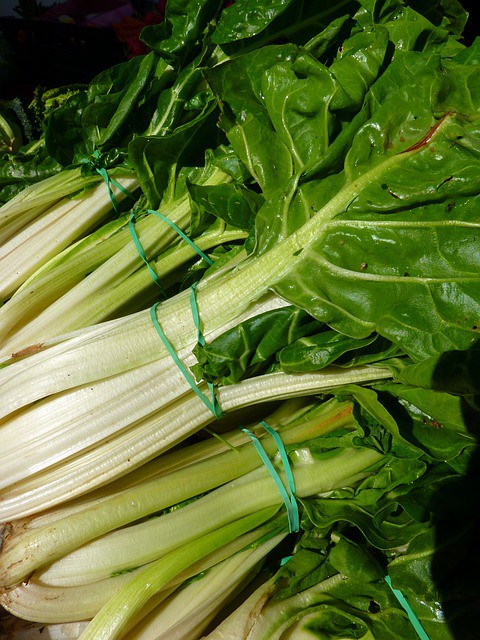
Get To Know Your Fruits And Veggies From C To D
The unmistakably sweet taste of ripe cantaloupe make this one fruit that is easy to enjoy. For those of us with a sense of culinary adventure, there's a world of interesting recipes waiting for you to explore with this popular seasonal fruit.
Chard Packs A Nutritious Punch In A Colorful Package
You may know chard by a number of different names, like swiss chard, spinach beet, mangold, or silverbeet.
But no matter what you call it, chard is a delicious and very nutritious green. It has a wealth of nutrients and over a dozen antioxidants, making it one of the best leafy vegetables for healthy diets.
What is it?
Chard is a cousin of the beet. However, only the stalks and leaves of chard are edible, even though, like beets, they have a bulb that grows beneath the surface of the ground.
©Copyright 2014 ♦ TheFoodChopper.com ♦ All Rights Reserved | Page 5 of 26
Get To Know Your Fruits And Veggies From C To D
The green leaves are saturated with a deep red and white tint. The stalks of the chard plant can range in color
between orange, white, red, and yellow. A variety of chard can sometimes be found packaged together as
rainbow chard.
History
Ancient Greeks and Romans used chard for medicinal purposes as early as the fourth century B.C. It is native
to the Mediterranean region, found mostly in Italy, France, and Spain, but is now also grown in America.
The word Swiss was added to the word chard by 19th century seed catalogs to help distinguish this vegetable
from the French spinach varieties.
Health Benefits
Chard is considered one of the world's healthiest vegetables for several reasons. It has at least thirteen known antioxidants, including syringic acid, which helps regulate blood sugar levels, and kaempferol, known for its
ability to benefit cardiovascular health. The stems and veins of the plant also have nutrients called betalains that help reduce inflammation and detoxify the body.
As if that's not enough, chard is an excellent source of vitamins K, A, and C, as well as a long list of nutrients that includes, calcium, iron, zinc, and phosphorus. Chard is also low in fat and cholesterol, and contains protein and dietary fiber. This very common green leafy vegetable is actually quite unique for its arsenal of healthy
benefits.
Fun Facts
The word “chard” actually comes from the Latin word carduus which means thistle. As this “carduus” was
being heavily cultivated in France, the word evolved into the French word “carde” which in English evolved
into “chard.”
Another source indicates that the word "chard" was adopted by the French in order to distinguish it from a similar celery-like vegetable called cardoon. No matter what you call it, chard certainly has developed
somewhat of an identity crisis.
How to Eat
Like many other leafy greens like kale and spinach, chard can be sautéed, grilled, roasted, or steamed as a side dish of its own or as an ingredient in casseroles mixed with rice, quinoa, or pasta. You can eat the younger
plants raw, but it has somewhat of a bitter taste that may be too harsh-tasting for most people.
Lots of Mediterranean dishes feature chard as part of the recipe. If stored properly in the refrigerator, chard can last up to two weeks. One of the best ways to cook chard is to boil it in a similar way you would other greens,
making a traditional Southern dish that has a long history in America. Another simple recipe is to saute quickly in a skillet and toss it with some lemon juice, olive oil, and garlic.
©Copyright 2014 ♦ TheFoodChopper.com ♦ All Rights Reserved | Page 6 of 26
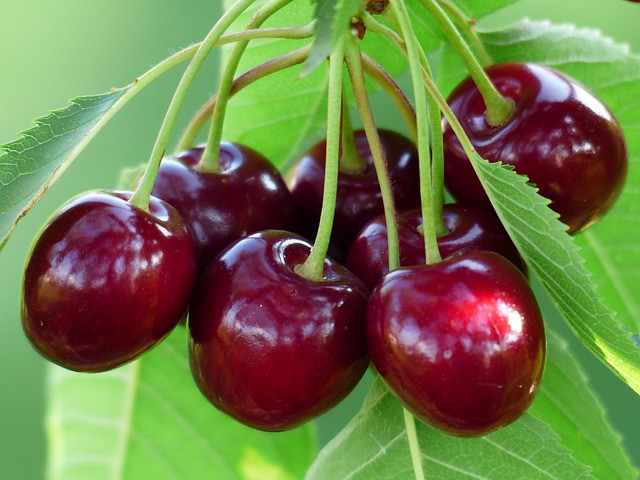
Get To Know Your Fruits And Veggies From C To D
Vegetarians frequently use chard in recipes, and one healthy idea is to create a spicy vegetable tart pie using
tofu, egg whites, mushrooms, and a crust made from various seeds and walnuts.
During the peak season for chard, stock up and try adding this green to soups, pasta, quiche and other baked
vegetable and cheese dishes. The nutritional benefits are incredible and you'll be enjoying a time-honored
member of the family of greens!
Cherries Brighten The Table And Gladden The Heart
The song says “life is just a bowl of cherries.” If that's true, you can count me in! Cherries are one of the
tastiest fruits you'll ever find, and one of the prettiest when placed in a bowl on a table. So, fill a bowl and check out what cherries have in store for your life.
What is it?
Cherries are part of the agricultural family that includes plums, apricots, and peaches. Like their cousins,
cherries have a stone pit in the center, but because of their smaller size, these pits cause a bit more
consternation. This has inspired many inventors to design mechanical cherry pitting tools.
©Copyright 2014 ♦ TheFoodChopper.com ♦ All Rights Reserved | Page 7 of 26
Get To Know Your Fruits And Veggies From C To D
You'll find cherries in the stores year-round, pitted and unpitted, canned and frozen, so you can enjoy eating
them just about anytime in a number of savory and sweet recipes. Not only are cherries delicious and very
snack-worthy, many people enjoy them for their health benefits as well. This little dynamo contains powerful
antioxidants and healthy benefits for cardiovascular wellness.
History
Cherries have been cultivated since prehistoric times, making it one of the oldest known fruits in existence.
Cherry trees are native to parts of Asia and Europe. However, Greek, Roman, and Egyptian civilizations knew
the fruit, as well.
At least one species of cherry trees was well established in America by the time the colonists arrived. Today,
four states contribute 90% of the world's cherry crop. Of the more than 1,000 varieties of cherry trees, only 10
are commercially produced for consumers.
Health Benefits
Cherries are a great source of potassium and vitamin C, but their biggest benefit is from a specific antioxidant called anthocyanins, which also gives the fruit its rich red pigment. These anthocyanins have been shown to
reduce pain and inflammation in scientific studies, which in turn reduces the risk for high cholesterol, heart
disease, and excess belly fat.
Other research suggests that cherries ease painful symptoms of conditions such as gout and arthritis. One
particular study by an Oregon university pointed to less muscle pain in runners who participated in a long-
distance relay after consuming cherry juice for the week before the race. This is a tasty trial that I know many runners wouldn't object to participating in.
Fun Facts
One of the more expensive varieties of cherry is the Rainer cherry. The reason for this is because, in general,
cherries are a favorite of birds. In the case of the Rainer cherry, the birds consume most of the season's harvest before they have a chance to be picked for commercial sale, thus creating a shortage which creates a higher
price tag. Cherry trees also provide food for several species of caterpillars, so you can see that when a bowl of cherries graces our table, it's dodged a lot of obstacles to get there.
Cherry trees are classified as part of the rose family. As such, cherry leaves are poisonous, unlike the fruit itself.
It takes about five years before a cherry tree matures enough for the first harvest. It's estimated that the average American household consumes about five pounds of cherries each year, and each cherry tree produces enough
cherries to bake almost thirty pies.
How to Eat
Fresh cherries have a short shelf life of just four days in a refrigerator, so they must be consumed quickly or
frozen as soon as possible. Freezing them quickly if not consumed fresh also retains the full benefit of the
antioxidants and nutrients in the fruit. Like other highly-perishable fruit such as blueberries, cherries should not be washed until you're ready to eat them.
©Copyright 2014 ♦ TheFoodChopper.com ♦ All Rights Reserved | Page 8 of 26
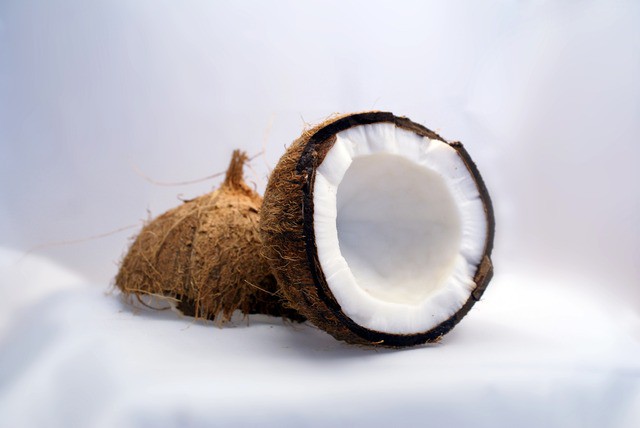
Get To Know Your Fruits And Veggies From C To D
The moisture that inevitably stays trapped in the packaging and on the fruit is bacteria's best friend.
Cherries can be snacked on as is or used in any number of recipes for a tart, fresh flavor from nature. They
make great additions to breakfast foods like cereal, oatmeal, pancakes, and yogurt. You can also find dried
cherries, perfect for including in meat or green salads, or with a number of pasta and rice dishes.
If you buy concentrated cherry juice, you can create some exciting smoothies and spritzers for a mid-day treat
or evening cooler. Of course the dessert possibilities for cherries are well known. You'll want to give cherries a try in pies, muffins, cakes, cookies, compotes, and much more. And who hasn't indulged in a chocolate covered
cherry at some point in their life?
Cherries are another of the super-foods highly recommended by nutritionists for healthy benefits. A quick
search for recipes will quickly introduce you to new ways to enjoy these old time favorites which have gained
in popularity again. Life is just a bowl of cherries when you include these tart morsels in your meal plan.
Coconut Cracks The Code For A Tasty Tropical Fruit
Perhaps you have enjoyed shredded coconut through the years in cookies or other desserts. But, did you know
this sweet treat can be enjoyed in so many other ways? Coconut is nutritious as well as delicious. Take a look at some of the delightful surprises this fruit, or nut if you wish, has for you.
©Copyright 2014 ♦ TheFoodChopper.com ♦ All Rights Reserved | Page 9 of 26
Get To Know Your Fruits And Veggies From C To D
What is it?
Coconuts are a member of the palm tree family, and grow in tropical climates closer to the equator, in both
hemispheres of the world. They are cultivated in over 80 countries within these regions. Coconuts have several
layers, and the exterior shell is a hard, fiber-like membrane that requires a sharp knife and a little work to crack.
This fruit is officially classified as a fibrous one-seeded drupe. Now, most people (unless you're a botanist)
have never heard of a “drupe.” A drupe is a fruit that has what we would call a “pit” which is nothing more than a hard cover that encloses the seed, like a peach or an olive. Drupes, including coconuts, have three layers
which we must navigate through to enjoy what the coconut has to offer.
History
The origin of the coconut seems to be debated a bit. One palm specialist has suggested that the coconut most
likely came from the Indian Archipelago or Polynesia, using one argument that there are more varieties of
coconut palms in the Eastern hemisphere than in the Americas. Other scientists argue that the coconut origins
can be traced to the Americas and migrated westward across the Pacific.
Portugal and Spain are the two countries that first documented seeing coconuts during the mid 16th century,
describing them as resembling the faces of monkeys. Although most often associated with the Pacific islands
and southern Asia in movies, art, and historical depictions, coconuts do grow in extreme southern areas of
Florida, California, Hawaii, and the Caribbean.
Health Benefits
Coconut has been credited with everything from improving hair and skin quality to easing symptoms of
menopause, diarrhea, and even helping wounds heal faster. Coconut's most significant quality is to aid digestion and maintain a healthy pH balance in the intestines and lessen the amount of toxin build-up.
One of the healthiest oils you can consume is coconut oil, having much less trans fat, resulting in better benefits from the Omega-3 fatty acids the oil contains. Even though the plant is high in saturated fat, it is said to help lower cholesterol and the risk for heart disease, as well as provide a natural energy boost and help people
maintain a healthy body weight.
It is also believed that coconut contains lauric acid, which helps the immune system by fighting off viral, fungal, and bacterial agents in the body. Coconut milk is another way to enjoy the health benefits of this tropical treat.
Many people have found the benefits of switching from other milks to coconut milk for their own particular
health needs.
Fun Facts
Some countries, Malaysia and Thailand for example, train macaque monkeys to harvest coconuts much faster
than humans can. In India, this plant is sacred, and is used in ceremonies as a sign of great respect for its healing qualities and its ability to reduce stress and eliminate toxins from the body.
©Copyright 2014 ♦ TheFoodChopper.com ♦ All Rights Reserved | Page 10 of 26
Get To Know Your Fruits And Veggies From C To D
Coconuts are referred to as the “tree of life” because every bit of the fruit is used to produce a wealth of
products such as drink, food, fiber, fuel, utensils, musical instruments, and much more. As a matter of fact,
coconut water was used successfully during World War II and Vietnam as a substitute intravenous solution due
to wartime shortages.
How to Eat
If you are lucky enough to get a real whole coconut, you may think it's a “touch nut to crack” but it's a lot easier than you might think once you know how. Look for the three dots resembling a face. Take a sharp object, like a
meat thermometer or screwdriver, and poke the holes until you find the soft one, then push it all the way in and drain the water into a glass; taste to make sure it's sweet (not oily or sour, which then you would throw the
whole thing out.)
If the liquid is sweet, proceed to crack the nut by first putting in a 400 degree oven for 15 minutes. When you remove it, you'll see the hard shell has cracked. Get out a hammer and smack the coconut until it splits open.
Remove the shell and peel away the brown skin attached to the white meat with a vegetable peeler. You're
ready to enjoy!
The coconut meat can be shredded, shaved, or diced and is most often thought of in desserts like macaroons,
cookies, pies, and cupcakes. But, don't stop there! Coconut is a wonderful addition to many main dishes and
sides, as well. Add shredded coconut to breading to coat shrimp, for instance. Shred, shave, or grate fresh
coconut to dress up many types of salads, including green salads, rice, and quinoa. The bulk of recipes for this tropical plant are the many delicious baked desserts and sweet breads, but use your imagination to expand your
use of coconut.
The uses for coconut milk are growing in popularity every day. Combine the milk with ingredients like raisins,
cranberries, brown sugar, and cinnamon to create a tasty basmati rice or brown rice pudding recipe. For meat,
chicken, or other main dishes, make a spicy curry with coconut cream or milk. Turn to any Thai recipe for ways
to use up your coconut milk, whether poured right from the coconut itself or purchased as processed milk.
Whether you purchase a fresh coconut or processed products made from this tropical plant, you can add a bit of
healthy sweetness to your diet by exploring the many recipes for this unique fruit, nut, or whatever you call it.
With a little creativity, you'll find lots of new ways to use this “tough nut” and be happy you finally cracked the coconut code!
©Copyright 2014 ♦ TheFoodChopper.com ♦ All Rights Reserved | Page 11 of 26
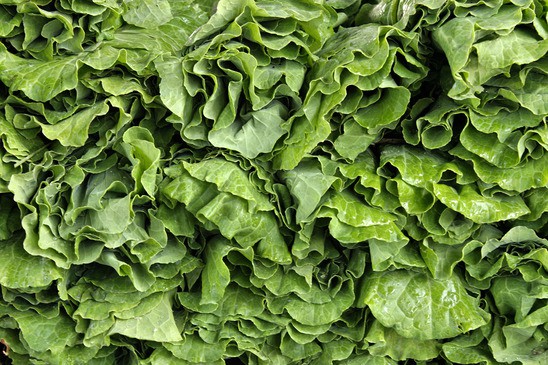
Get To Know Your Fruits And Veggies From C To D
Collard Greens Are The Quintessential Southern Cuisine
When you think Southern cooking, you can't think too long before considering collard greens. This staple of the Southern diet has a long history and many fans who have perfected cooking their “collards” for generations.
Let's take a little closer look at what makes these leafy greens so special.
What is it?
Collards belong to the cabbage family of leafy vegetables which, depending on the climate, can be a perennial
or biennial plant. The edible leaves have a slightly bitter taste, and are best when picked small and before they are fully mature.
Even though collard greens are available all year long, they are actually at their peak in the colder months.
These greens have taken a strong hold on the Southern culture of the United States, and found their way into
homes for generations, much like other greens such as mustard, chard, turnip, and kale. And, collards are
actually found in many other regions around the world.
History
Ancient Romans and Greeks grew and ate collard greens as early as the 4th century B.C. The American use of
collards began when African slaves brought their knowledge of creating meals fro









